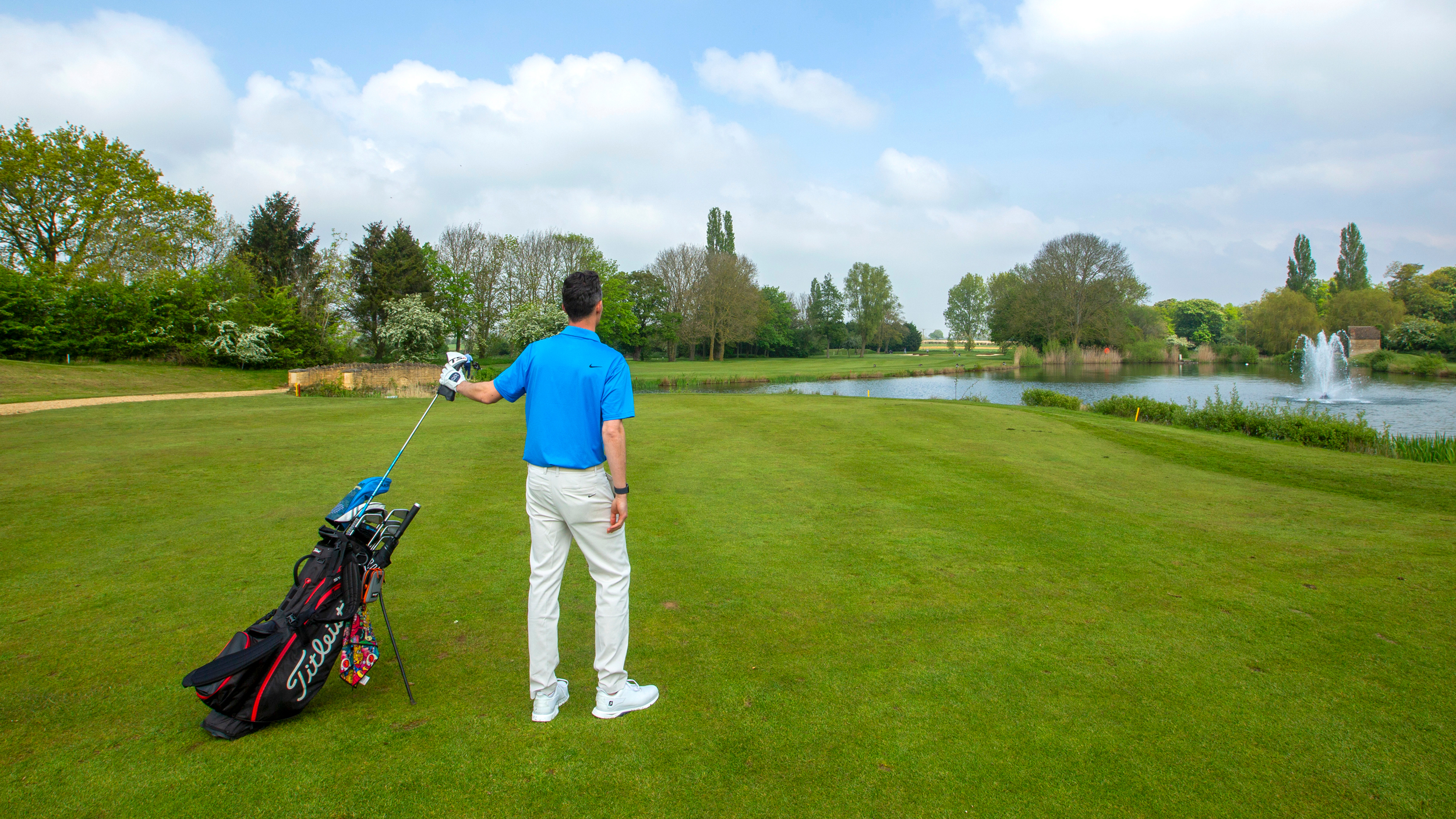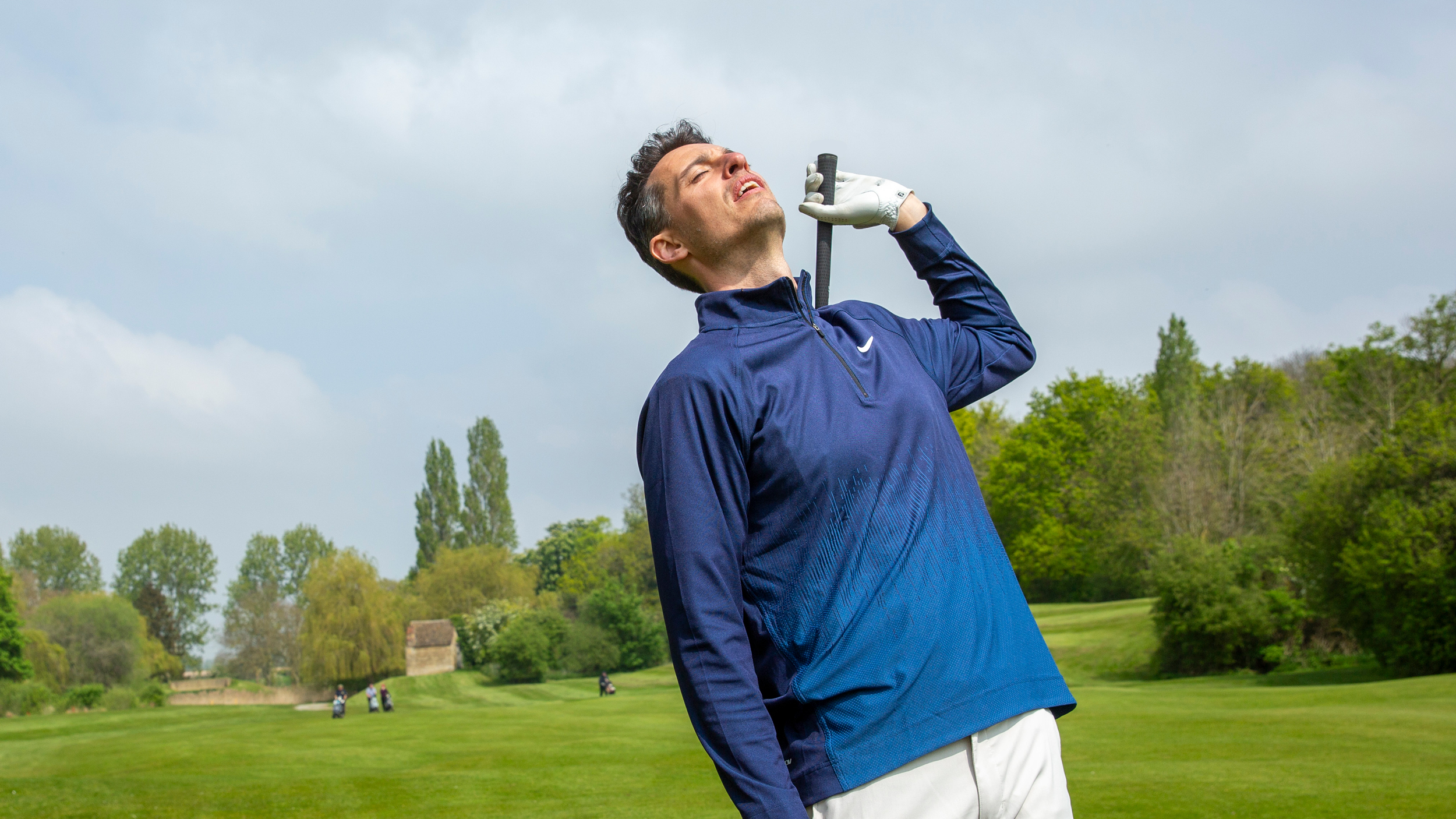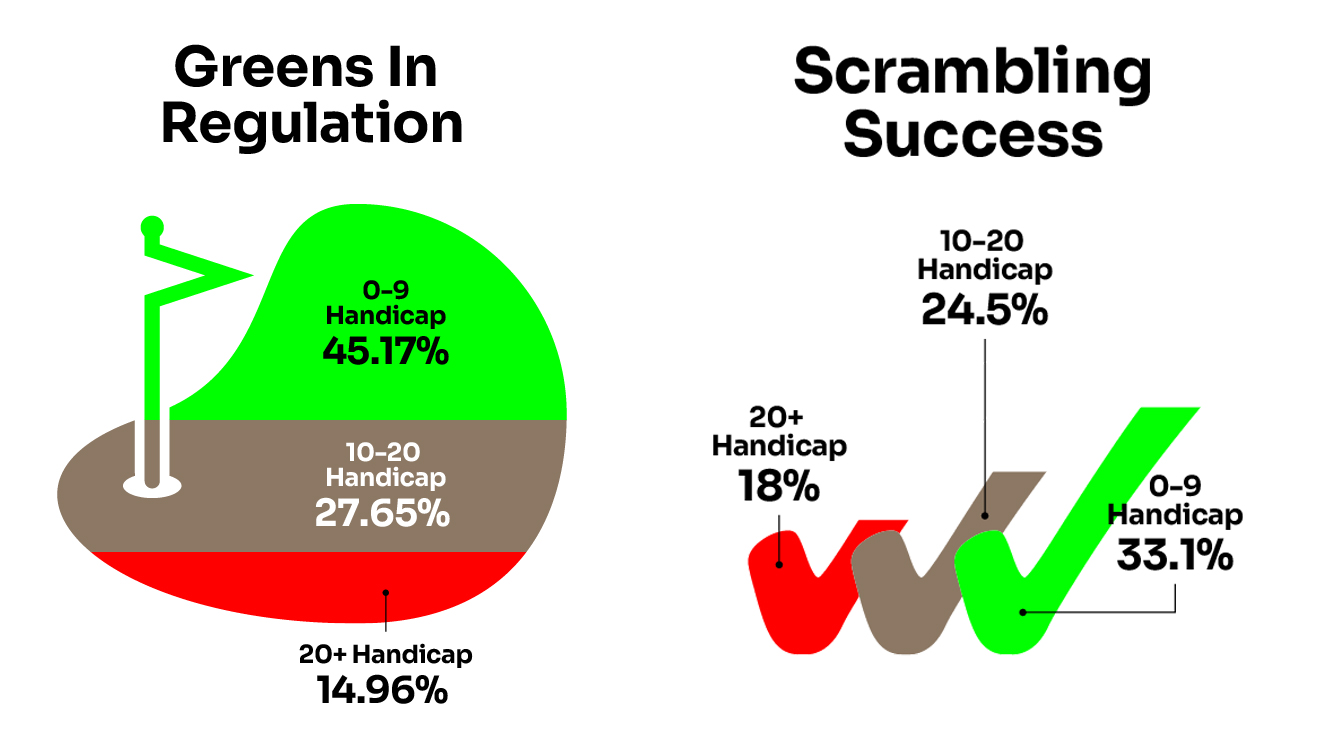
Golfers can save a surprising amount of shots by eliminating some basic strategic mistakes which come about from poor decision making and not factoring in your tendencies. Whether it's chasing flags, hitting shots aimlessly down the hole or not using shot tracking technology to assess your play, we can all make better decisions on the course which should knock off a shot or two, which can make the difference between a good round and a great one.
1. Not allowing for your common miss off the tee
A lot of amateurs are guilty of aiming straight down the middle of the fairway without putting much thought into their typical shot shape and how that’s going to affect where the ball will end up on a given hole. The Golfshot driving data tells us that three out of four ability levels miss more to the right than they do the left. High handicappers miss to the right more than any other and 5% of golfers miss the fairway to the right more than 50% of the time.
So don’t assume the stars will align and you’re going to hit that frozen rope straight down the middle off the tee even if that’s the shot you intended - be realistic, allow for your typical shot shape - and remember, this could be different on any given day (some days we hit balls on the range before we tee off and for whatever reason, you might be hitting draws instead of fades). Don’t ignore this, go with it - allow for it and also use the teeing area to your advantage by pegging your ball up on the side that's going to provide you with the most amount of room for your shot shape.
2. Making too many double bogeys
One of the biggest things that separates the good golfers from the average ones is the big numbers - the double bogeys, triple bogeys and others - rarely do you see tour players, elite players compound an error on a hole with another on the very next shot. Good players are able to stay in the present, forget about the previous shot if it was a bad one and focus on what is required for the next one. Golfshot data tells us that high handicappers make double bogeys around 59% of the time.
Now obviously higher handicappers don’t necessarily have the skill level to hit two high quality shots in a row but if you can eliminate those mental errors where a lack of concentration creeps in and you go from bad to worse on a hole, you should start to see those big numbers disappear from your scorecard. Some GPS apps like Golfshot will provide 3D hole flyovers to get a clearer view of what lies ahead with club recommendations to ensure you stay out of trouble.

3. Under thinking second shots on par fives
Most golfers view par fives as the best scoring opportunity but often get into trouble by not thinking carefully enough about the second shot and capitalising on a straight drive. The stats say that every ability level averages over par on a par five with high handicappers averaging over 6.5 shots on par fives, which feels like a wasted opportunity.
Now the consensus among teaching pros and stats experts would be to try and get as far down the hole as possible with your second shot. Even though you might think you're better off leaving yourself with a full shot from 100 yards versus a pitch from 40 yards, the stats say otherwise. That said, it's important you avoid bunkers, out of bounds and penalty areas, so choose a club that takes these out of play. Unless you’ve got a serious case of the yips or top your three wood 60 percent of the time, get it down there as far as you can in a position that gives you a clean lie and a clear shot to the green for your third.
4. Chasing tight flags
Everyone wants to knock their approach shots stiff but the reality is that most golfers have unrealistic expectations as to how close to the hole they should be hitting their irons and wedges. The average 18 handicap golfer only hits around four greens in regulation, so they are missing far more greens than they are hitting. And when you consider that high handicappers only get up and down 18% of the time, mid handicappers 24.5% and single digit handicaps 33% of the time - golfers can’t really afford to miss greens if they want to shoot lower scores.

So the first adjustment golfers can make is to stop chasing flags and aim at the middle of greens, this gives you the biggest margin for error. There is a school of thought that amateur golfers would score way better if there weren’t any flags on the greens at all! Alternatively, think about where the best miss is and favour that side with your aim. So if the pin is tucked on a shelf with a big drop off behind it, make sure you pick a club that can’t go long. Golfshot even has a club recommend feature based on previous shot data, which is useful because it feeds in real shots hit on the course rather than how you hit your clubs on the driving range, which can be very different.
5. Play too aggressively after a bad hole
We’ve all done it haven’t we - we make a bogey, the red mist starts to set in and we immediately want to get that shot back and we play the following hole far too aggressively resulting in another bogey. In fact, we’ve seen some stats on world number 1 Scottie Scheffler recently that showed how well he scores after he makes a bogey, which isn’t that often it’s worth saying, and if you look at the stats from Golfshot you’ll discover that high handicaps make on average 12 bogeys a round but most importantly, make consecutive bogeys nearly 70% of the time.
Of course, making a bogey is sometimes nearly unavoidable and perfectly fine some of the time, especially if you’re playing a tough stretch of holes, but what we’re trying to get across here is to not let your aggression get the better of you. There are holes where a par is a good score and it’s important to not let what happened on the previous hole (if you had a nightmare) make you play a hole incorrectly. Straight after a bogey, most people want to smash a driver to release their pent-up frustration but if there are bunkers down there in play for where you hit your driver, remember to try and adapt an approach that eliminates mental errors, keeps your ball in play and gives you the best chance of making a par or even a birdie to make up for your previous mistake.
6. Ignoring the skill of lag putting
Three putts kill the momentum of a round and your ability to shoot a good score. While every ability of golfer will three putt at least once during a round on average, it is especially prolific among high handicappers. Much of this comes down to not having a system for controlling speed on long putts - it is often based on feel and just guessing how far away the hole is.
But if you're serious about three putting less, it might be worth creating a system or simply practicing the stroke required to hit the ball different distances. Use your trail foot as a guide and swing the putter back past it at different points and note how far the ball travels. This could be really useful for controlling speed and should help you knock your long putts closer, providing you've read the line correctly!

7. Not using technology to assess performance
The final strategic mistake golfers make is not tracking their shots or benchmarking their play against golfers of a similar ability. If you’re not doing this, you’re not going to get an accurate picture as to where your strengths and weaknesses truly lie and where you really need to improve and spend your practice time. Strokes Gained is a really important metric used on the leading tours and it is essentially a measure of progress to the hole in shots. Apps like Golfshot have auto shot tracking and auto strokes gained features so you can seamlessly track your play and gain those crucial insights after your round, which creates a great starting point for your improvement and allows you to monitor your progress.







